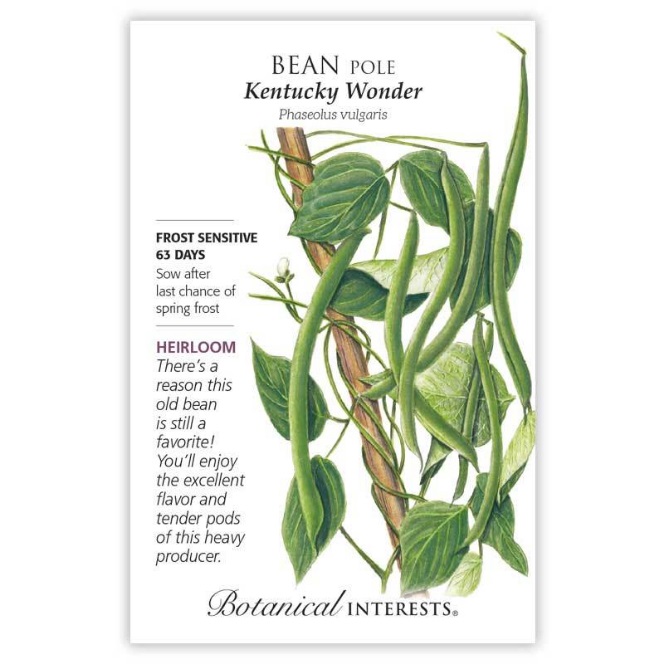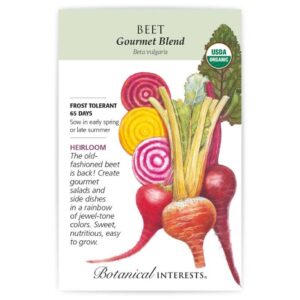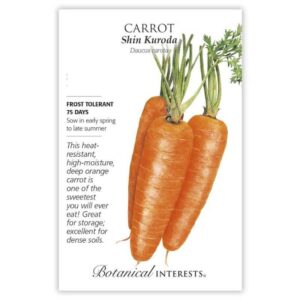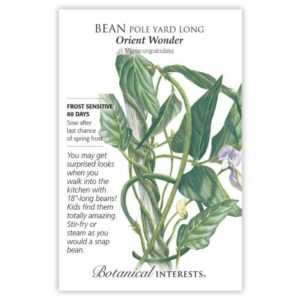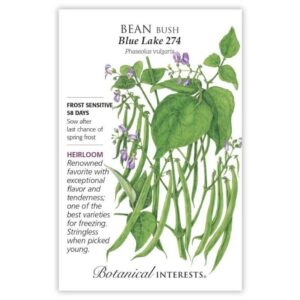Description
Discover the timeless appeal of 'Kentucky Wonder' pole beans, a beloved heirloom since the 1800s. These vigorous 5'–7' vines deliver heavy yields of tender, stringless 9″ pods brimming with rich, unmatched flavor. Ideal for fresh eating, freezing, or shelling, this multi-use variety performs well even in hot climates and resists common bean mosaic virus. Add these productive plants to your garden for an abundant and versatile harvest.
This packet sows up to 20 feet or two 4-foot diameter teepees. 40 seeds.
Variety Info:
Botanical Name: Phaseolus vulgaris
Days to Maturity: 63 days
Family: Fabaceae
Native: Mexico and South America
Hardiness: Frost-sensitive annual
Plant Dimensions: 5'–7' long vines
Variety Information: 7″–9″ long, ½” wide silvery-green pods; stringless when young, brown seeds. Pre-Civil War variety known then under different names, released as 'Kentucky Wonder' in 1877 by J. H. Gregory & Sons seed company. Resistant to bean common mosaic virus.
Type: Snap bean
Attributes: Disease Resistant, Heat Tolerant
Sowing Info:
When to Sow Outside: RECOMMENDED. 1 to 2 weeks after your average last frost date, and when soil temperature is at least 65?F, ideally 70??85?F. Successive Sowings: Every 7 to 14 days up to 80 days before your average first fall frost date. NOTE: In very hot summer areas, skip sowing as high heat approaches, temperatures consistently above 90?F will prevent beans from forming.
When to Start Inside: Not recommended; bean seedlings are sensitive to root disturbance.
Days to Emerge: 6 – 12 days
Seed Depth: 1″
Seed Spacing: 1 seed every 6″
Row Spacing: 36″
Thinning: Not required
Growing Info:
Harvesting: Snap beans are ready to pick when the pod “snaps” or breaks in half cleanly. This is when seeds have just begun to form and the pods are several inches long (depending on the variety). Hold stem with one hand and the pod with the other hand to avoid pulling off branches, which will continue to produce. Harvesting early and often will stimulate flower production for more beans. At season's end, plants are great compost material if they are disease-free.
